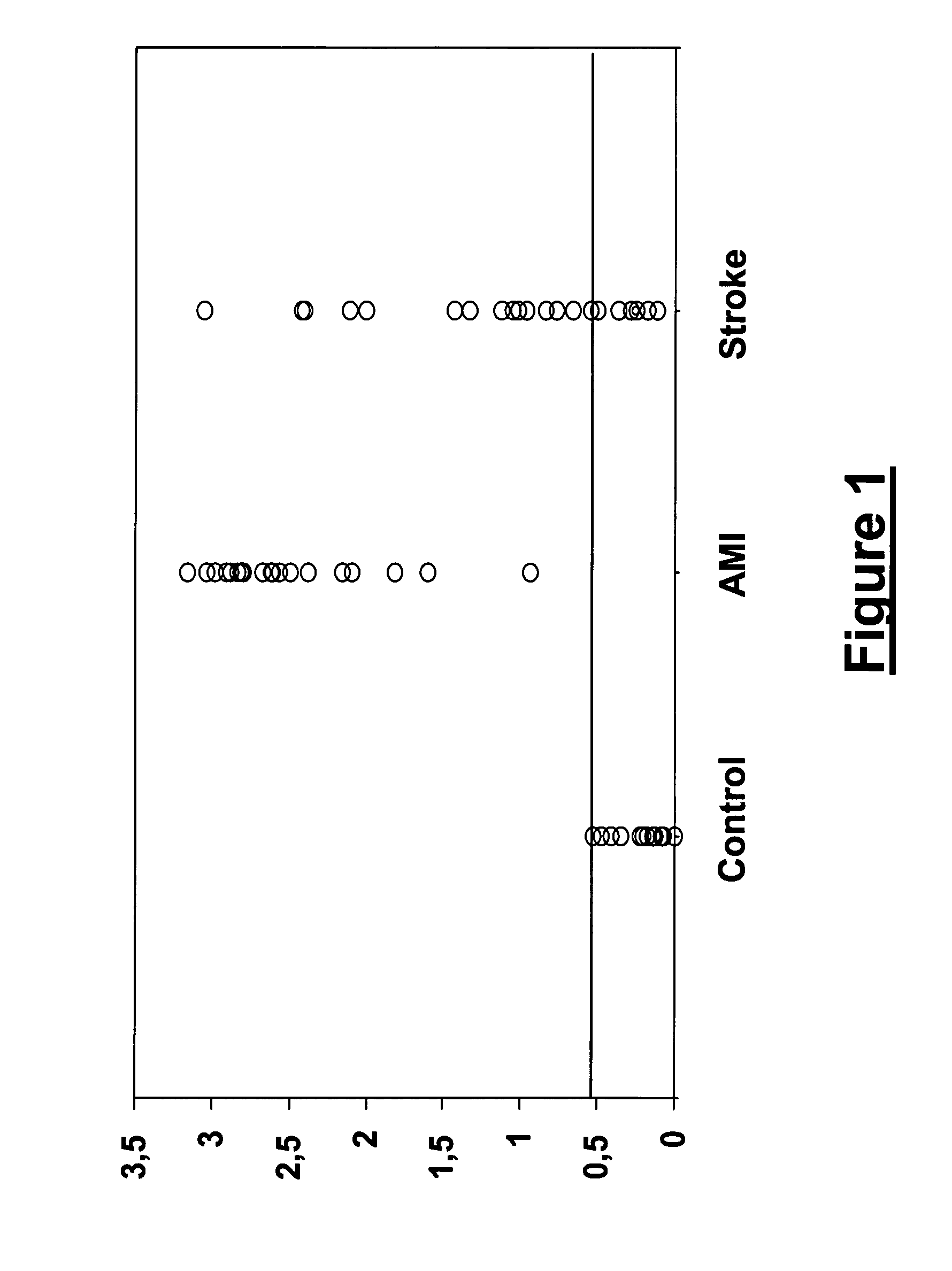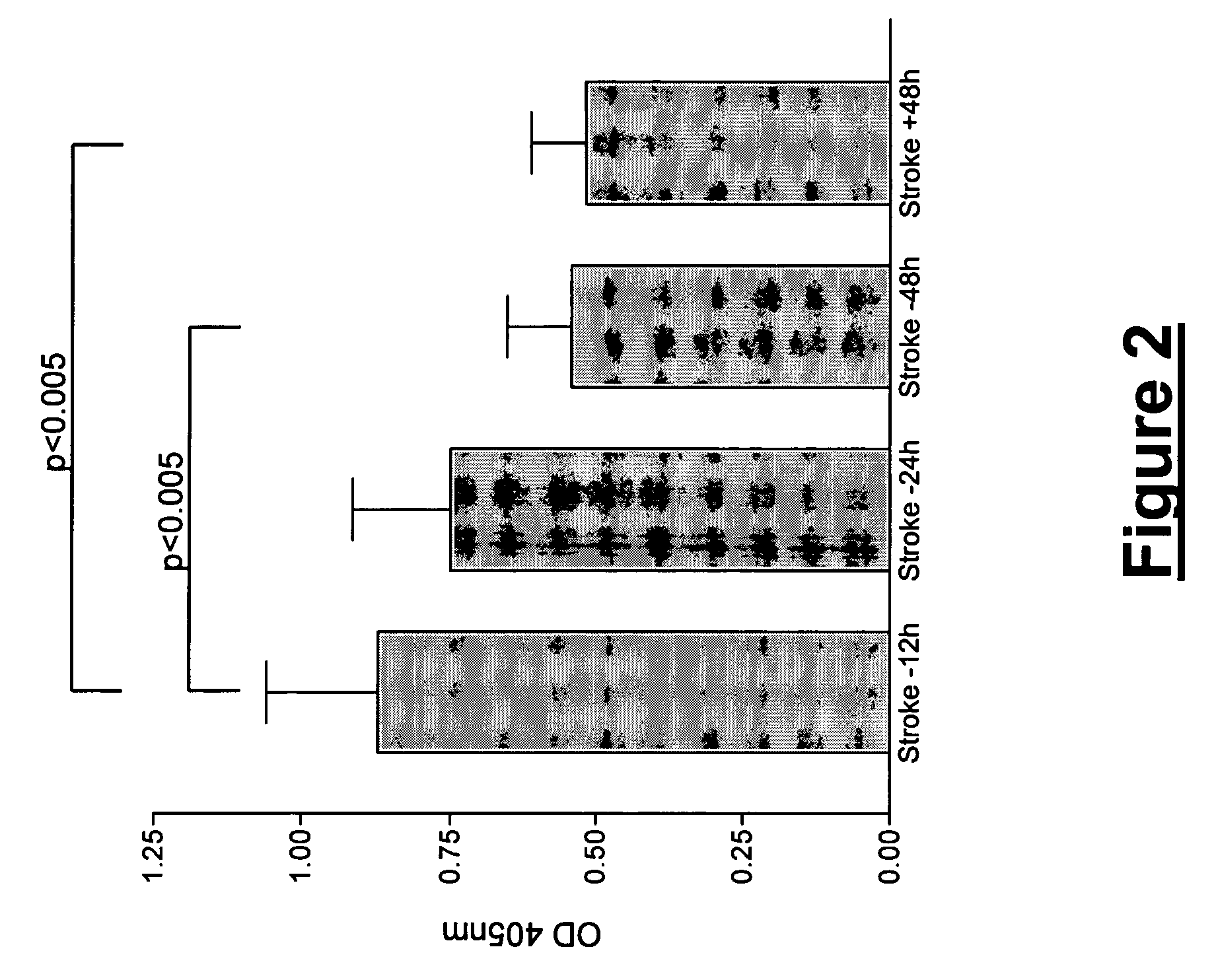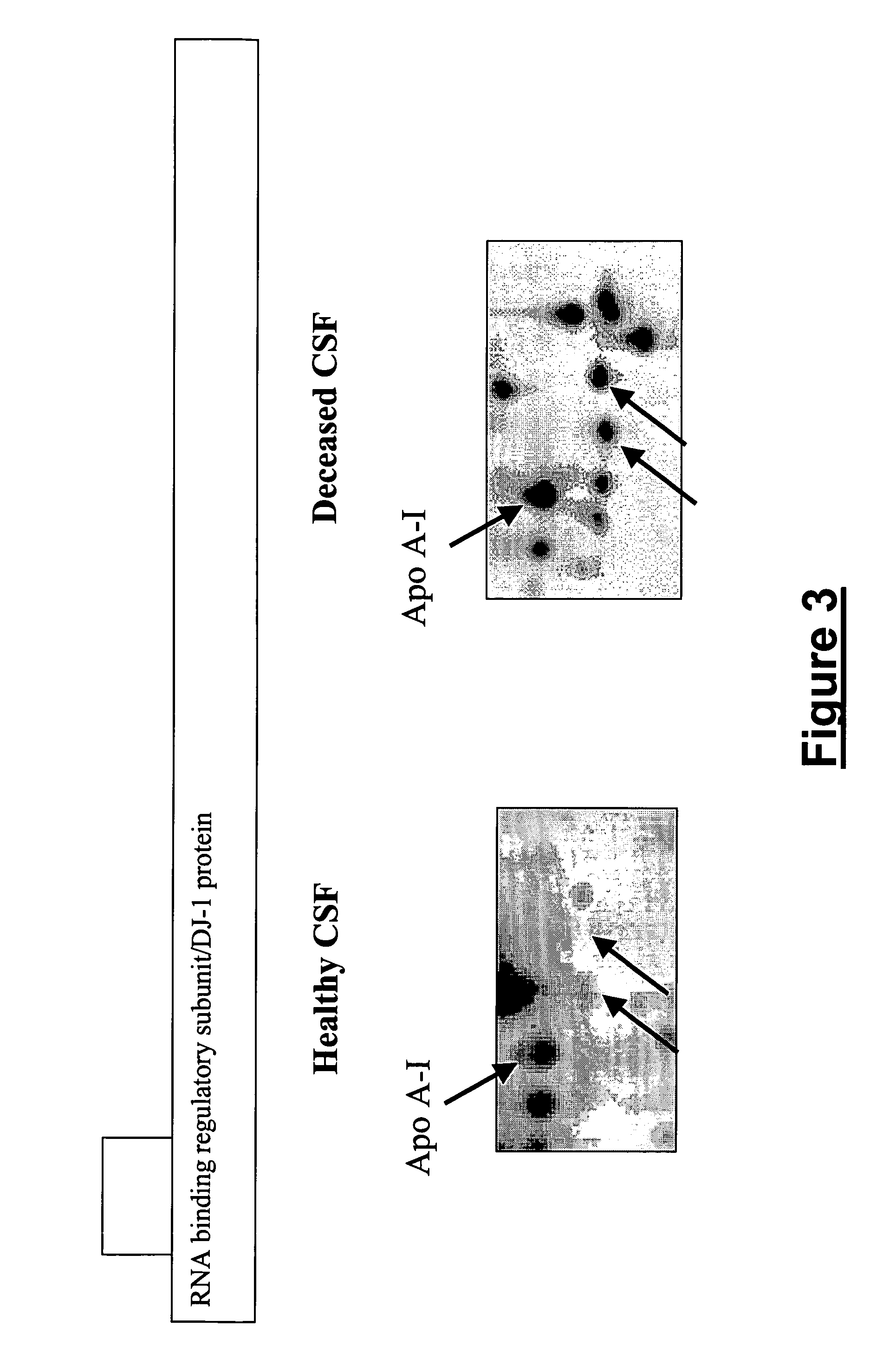Diagnostic method for brain damage-related disorders
a brain damage and diagnostic method technology, applied in the direction of drugs, instruments, peptide sources, etc., can solve the problems of poor sensitivity and specificity, affecting the diagnostic value of brain damage biomarkers, and unable to accurately predict clinical status and functional outcomes
- Summary
- Abstract
- Description
- Claims
- Application Information
AI Technical Summary
Benefits of technology
Problems solved by technology
Method used
Image
Examples
example 1
[0166]Using two-dimensional gel electrophoresis (2-DE) separation of cerebrospinal fluid (CSF) proteins and mass spectrometry techniques, 15 polypeptides named in Table 1 were found elevated or decreased in the CSF of deceased patients, used as a model of massive brain damage.
[0167]Study Population and Samples Handling
[0168]Eight CSF samples were used for the proteomics-based approach aiming at discovering brain damage-related disorder markers. Four of these samples were obtained at autopsy from deceased patients 6 hours after death with no pathology of the central nervous system. Four others were collected by lumbar puncture from living patients who had a neurological workup for benign conditions unrelated to brain damage (atypical headache and idiopathic peripheral facial nerve palsy). CSF samples were centrifuged immediately after collection, aliquoted, frozen at −80° C. and stored until analysis.
[0169]CSF 2-DE
[0170]All reagents and apparatus used have been described in detail el...
example 2
[0174]Using two-dimensional gel electrophoresis (2-DE) separation of cerebrospinal fluid (CSF) proteins and mass spectrometry techniques, FABP was found elevated in the CSF of deceased patients, used as a model of massive brain damage. Since H-FABP, a FABP form present in many organs, is also localised in the brain, an enzyme-linked immunosorbant assay (ELISA) was developed to detect H-FABP in stroke vs. control plasma samples. However, H-FABP being also a marker of acute myocardial infarction (AMI), Troponin-I and creatine kinase-MB (CK-MB) levels were assayed at the same time in order to exclude any concomitant heart damage. NSE and S100B levels were assayed simultaneously.
[0175]Study Population and Samples Handling
[0176]The population used for the assessment in plasma of the various markers detailed below included a total of 64 prospectively studied patients (Table 2) equally distributed into three groups: (1) a Control group including 14 men and 8 women aged 65 years (ranges: 34...
example 3
[0195]Three new proteins have been identified on 2-DE gels prepared with CSF samples from deceased patients. These proteins correspond to spots that have been previously shown increased in CSF samples from deceased patients relative to healthy controls. However, previous attempts to identify these proteins using MALDI-TOF mass spectrometry were unsuccessful. The current experiments were performed by μLC-MS-MS using ESI-Ion Trap device (DecaLCQ XP, ThermoFinnigan). Furthermore, the increasing amount of data in databases could lead to the successful identification of previously uncharacterized spots.
[0196](1) RNA-binding protein regulatory subunit (014805) / DJ-1 protein (Q99497): RNA-binding protein regulatory subunit has been previously described in deceased CSF samples (see Example 1 above). Here, we have obtained the same identification with an adjacent spot (FIG. 3). We also confirmed the previous identifications. FIG. 1 shows enlargements of healthy CSF and deceased CSF 2-DE maps....
PUM
| Property | Measurement | Unit |
|---|---|---|
| pH | aaaaa | aaaaa |
| time | aaaaa | aaaaa |
| pH | aaaaa | aaaaa |
Abstract
Description
Claims
Application Information
 Login to View More
Login to View More - R&D
- Intellectual Property
- Life Sciences
- Materials
- Tech Scout
- Unparalleled Data Quality
- Higher Quality Content
- 60% Fewer Hallucinations
Browse by: Latest US Patents, China's latest patents, Technical Efficacy Thesaurus, Application Domain, Technology Topic, Popular Technical Reports.
© 2025 PatSnap. All rights reserved.Legal|Privacy policy|Modern Slavery Act Transparency Statement|Sitemap|About US| Contact US: help@patsnap.com



